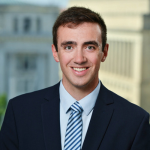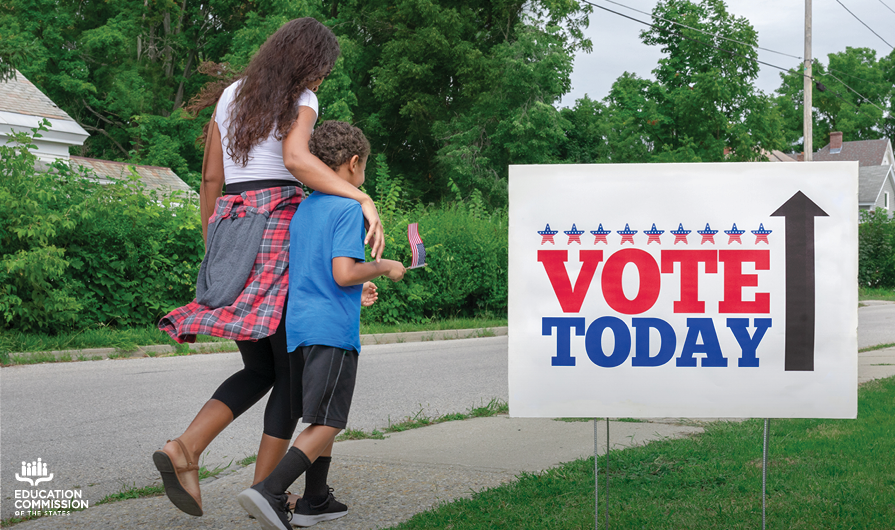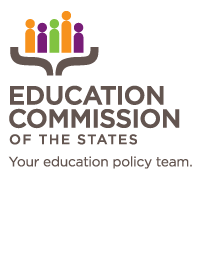This year, voters in eleven states took to the ballot box to elect their governors. Three incumbents — Govs. Greg Gianforte in Montana, Spencer Cox in Utah and Phil Scott in Vermont — held onto their governorship. The eight states with guaranteed new executive leadership saw no party turnover. Republicans held the state executive office in Indiana, Missouri, New Hampshire, North Dakota and West Virginia. Democrats held Delaware, North Carolina and Washington.
We tracked the education policy platforms of candidates from both major parties, as stated on official campaign websites, to identify the priorities and trends across the country.
Education Policy Issues Among All Gubernatorial Candidates
Republican candidates prioritized school choice — emphasized as a central issue in five campaigns — by focusing on the expansion of charter schools and other school choice initiatives. These candidates also stressed the importance of parental involvement in education, local control, and school safety.
On the other hand, Democratic candidates emphasized education funding and finance, which was the focal point of six candidates. They also tended to prioritize early childhood education, noted in six instances, and student support services, which were featured in three candidates’ platforms.
Despite some differences, both parties share common ground on several issues. Each place a strong emphasis on teacher recruitment and retention, a stated priority for 14 of the 22 candidates, and both advocate for workforce development through career and technical education. Additionally, both major parties stressed the importance of improving access to quality education.
Education Priorities Outlined by Incumbent Governors and Governor-Elects
In Delaware, governor-elect Matt Meyer is prioritizing school funding including an increase to school impact fees on new developments to enable local school districts to accommodate for growing student populations. Meyer’s campaign also supported a number of recruitment and retention policies, including salary increases for teachers and paraprofessionals, promoting high-retention pathways into teaching and funding teacher residencies. He also cited early childhood education, literacy and curriculum improvements, and workforce developments as being top education policy priorities for his administration.
In Indiana, governor-elect Mike Braun campaigned to transform education and workforce development through a robust school choice policy. Gov. Braun’s campaign also emphasized parental involvement in their children’s education, including additional transparency in school curriculum.
Governor-elect Mike Kehoe’s campaign in Missouri focused on the importance of school choice. Governor-elect Kehoe also advocated for accountability in higher education funding and support for institutions that demonstrate measurable outcomes. Notably, governor-elect Kehoe was the only gubernatorial candidate to promote arts programs in schools as positive outlets for students.
While campaigning for his second term, Gov. Greg Gianforte in Montana focused on workforce development and improving access to high-quality education, including increasing pay for starting teachers and reaffirming parental involvement in education. Gov. Gianforte’s campaign also prioritized trades education and the expansion of apprenticeship programs.
The campaign of governor-elect Kelly Ayotte in New Hampshire prioritized universal school choice and equal education opportunities for all children. She has also advocated for enhanced parental involvement in education and emphasized the need to improve public education standards, recruit and retain high-performing teachers with better pay and benefits, and address learning recovery by strengthening academic standards, including a curriculum that prioritizes subjects like math, civics, English, science and history.
In North Carolina, governor-elect Josh Stein campaigned on increased funding for public education in order to raise pay for teachers and essential school staff, such as counselors and social workers, as well as to modernize education resources like technology and textbooks. He also advocated for expanding access to high-quality early childhood education; workforce development initiatives, such as expanding CTE and apprenticeship programs; and improving postsecondary affordability.
In North Dakota, governor-elect Kelly Armstrong’s campaign advocated for local control and the ability of parents to choose home, private or parochial education for their children and encouraging collaboration among parents, community leaders and educators in decision-making processes. Governor-elect Armstrong also focused on workforce development by looking to align local technical colleges and universities with regional job market needs.
Incumbent Utah Gov. Spencer Cox prioritized workforce development by addressing college and technical classes, apprenticeships and various workforce programs during his re-election bid. He sought to enhance teacher recruitment and retention through improved compensation and professional growth opportunities. Gov. Cox also campaigned on early literacy programs and the full funding of all-day kindergarten.
During his re-election campaign, Vermont Gov. Phil Scott proposed increased funding for career and technical education projects. He also campaigned on increased support for Vermont State Colleges and adult learning initiatives and grants and assessments to improve school safety.
In Washington, governor-elect Bob Ferguson campaigned on the expansion of early childhood education programs for families with low-incomes and universal pre-K for all four-year-olds. In K-12 settings, governor-elect Ferguson campaigned on class size reduction, school safety initiatives and universal meals for all K-12 students. He also advocated for lowering bond passage thresholds to facilitate district funding and increases to special education funding and mental health supports. For postsecondary students and graduates, he campaigned on postsecondary affordability, including increased financial aid opportunities and income-based repayment options for student loans.
In West Virginia, governor-elect Patrick Morrisey advocated for the expansion of school choice and charter school programs with the goal of allowing funding to follow individual students. He also campaigned on increasing teacher salaries to attract and retain quality educators.
Overall, this year’s elections revealed diverse priorities among governors and governor-elects across states. Among this diversity of priorities, however, key issues like teacher retention, workforce development, early childhood education and parental involvement took center stage. We will continue tracking updates on education policies and priorities, including with our annual State of the State address coverage in early 2025.









